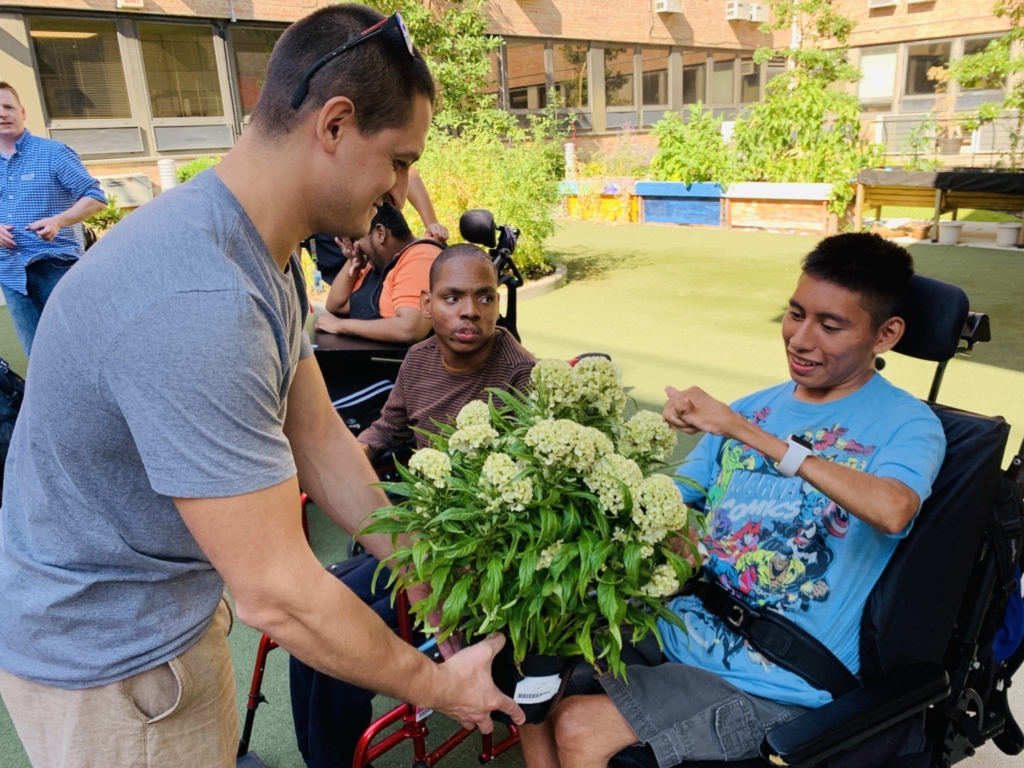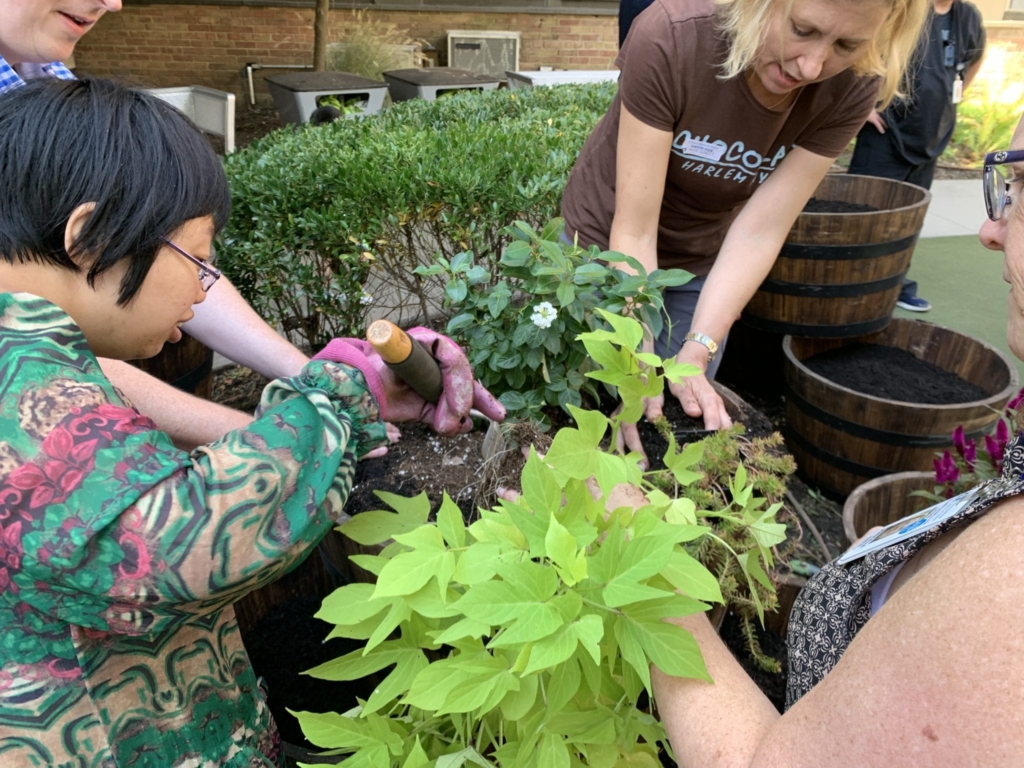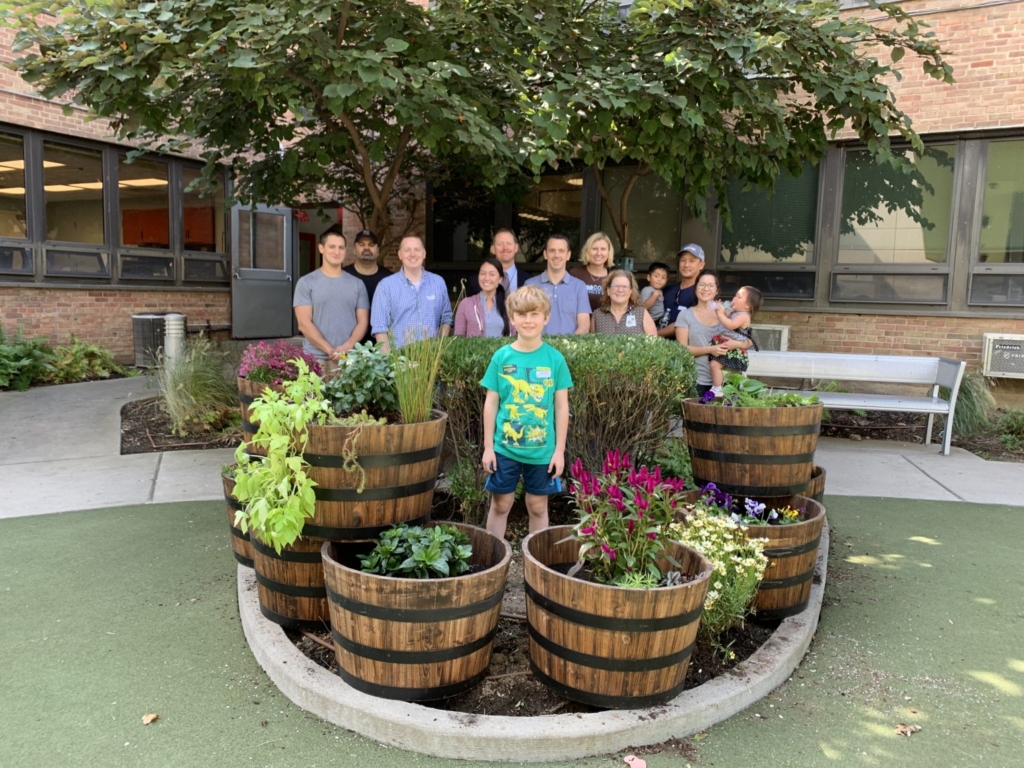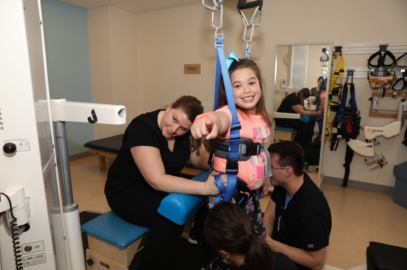October 14, 2019

The sensory garden at St. Mary’s Hospital for Children was designed and developed with the special needs of our patients, and their families, in mind. Here, the children can wander freely to enjoy the smell of flowers and herbs and touch them to feel their leaves. When you think of a garden, perhaps you envision a small plot of land that is used to grow either vegetables, fruit, herbs, or flowers and not necessarily a garden that is robust with aroma and texture. But a typical garden and a sensory garden are not that much different from each other and actually have a lot of things in common.
But what makes a sensory garden different from a typical garden? A sensory garden uses a variety of plants and elements that focuses on all five senses to stimulate and soothe. It provides the patients of St. Mary’s with a place where they can be surrounded by scents, textures, and colors of plants. Elements can include wind chimes, flags, or children’s artwork to provide a visual.
The plants in the sensory garden at St. Mary’s varied in height, color, texture, and smell. It is a year-round garden that includes perennials, ground cover, ornamental grasses, edible plants, and small shrubs.
Having a sensory garden at St. Mary’s provides our patients with an environment that is non-threatening. It helps them improve their levels of communication and social skills, stimulates awareness of their surroundings and also reduces their stress levels, as well as the anxiety and frustrations our patients may experience. Additionally, the garden provides our patients with a sense of responsibility for the care of the garden that surrounds them by watering the plants on a daily basis.

To appeal to the sense of hearing, some of the plants included, such as bamboo, creates a soothing sound when there is a windy day. Elements may include wind chimes, a birdbath, bird feeder or birdhouse in order to attract birds and the birdsongs they bring to the garden.
For the sense of touch, plants that are soft to the feel, such as soft lamb’s ear or Spanish moss, may be included. Textures in fuzzy leaves, soft flowers, or herbs such as rosemary, thyme, tarragon, parsley or mint encourage touching and are able to withstand constant brushing or handling by our patients.
There are so many different plants and flowers to provide scents that appeal to the sense of smell. These include lilacs as well as fragrant herbs that bloom in the spring. Imagine the aroma of lilac when touched by young hands.
In selecting plants that appeal to the sense of sight, St. Mary’s includes bright flowers and plants that attract butterflies and other plants that change throughout the season. Some sensory gardens may include colored floodlights and mirrors to enhance the visual aspect.
To enhance the sense of taste, St. Mary’s includes edible and tasty vegetables for our patients to sample. Tomatoes, peas, and even pumpkins may be seen in the sensory garden.

St. Mary’s has been fortunate to have Select Equity Group, L.P. fund our sensory garden and help plant the garden with our patients.
If you would like to know more about the sensory garden at St. Mary’s Hospital for children, please click here to contact us.






